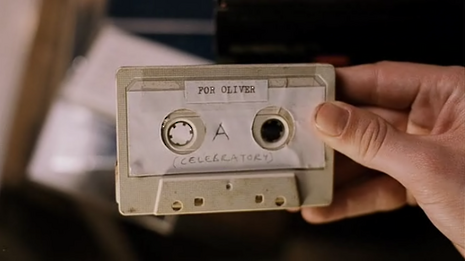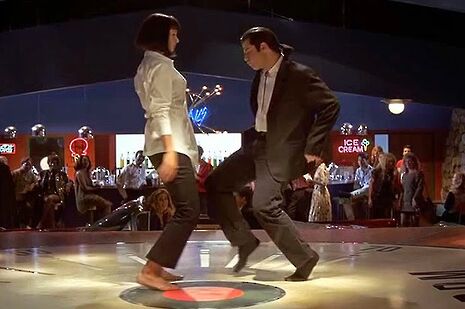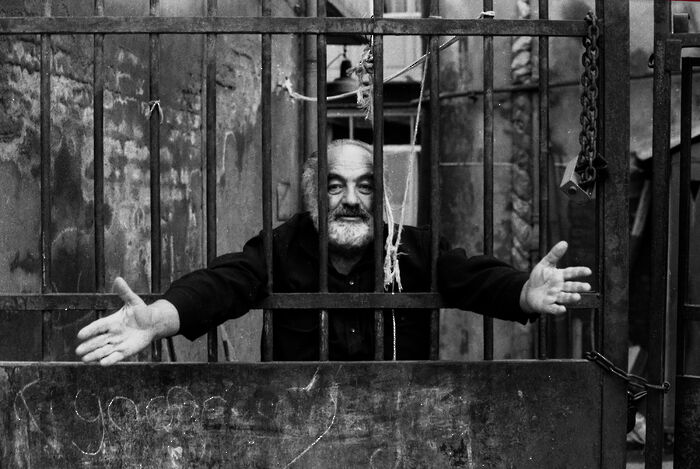Indie themes: a story of strange parallels
Indulging in the soundtracks of her favourite films, Olga Kacprzak finds comparisons between a host of indie soundtracks you should be sure to seek out

Behind every good film is a good soundtrack. Well, perhaps that is an exaggeration – put more aptly, a soundtrack enhances the whole narrative. But it is not only the narrative that benefits: a soundtrack is key to setting the tone and mood of the film. Some say that a soundtrack is as important for the plot as its cinematography, crew, or cast, and each introduces music into the film in a unique way. Yet, when it comes to ways soundtracks are presented to the viewer, there are some surprising parallels to be drawn between films that at first glance appear completely different. The soundtracks to these seven low-budget independent movies may all belong to different musical genres, but some of them have more in common than one might think.
"Again, the soundtrack is an active part of the narrative"
Let’s start racking our imagination. What does Juno’s soundtrack have in common with those of Pulp Fiction or Reservoir Dogs? The former, a coming-of-age comedy-drama, is full of bittersweet indie folk, while the latter two, both modern-classic crime thrillers, feature a lot of rock and roll, ‘70s pop rock, and soul. On the face of it, there is nothing similar about them.
Soundtracks to Quentin Tarantino’s films need no introduction. They have become as iconic as his characters and monologues. A likely reason for their uniqueness is his technique for choosing the music for his films. Throughout the writing stage, Tarantino dives through his record collection in search of pieces that would fit the rhythm and beat of the movie. Apparently, this jumps him ahead of his writing process as he gets inspiration from it, and in the films Tarantino’s own records are often transferred directly, allowing the occasional distinctive needle-drop and crackling to be detected.

The characters often actively engage with the music, using diegetic sound to allow the songs themselves to play key roles in the scenes. Perhaps the most famous example is that featuring Mia Wallace (Uma Thurman) and Vincent Vega (John Travolta), where the couple dances awkwardly at the Jack Rabbit Slims diner to “You Never Can Tell” by Chuck Berry. In Reservoir Dogs we find another iconic dance scene, this time featuring one of the gangsters, Mr Blonde (Michael Madsen), dancing maniacally to 'Stuck In The Middle With You' by Stealers Wheel while torturing a police officer. Interestingly, Madsen confessed that the scene was wholly improvised and that he had never heard the song before.
"It is probably the best music for a late-night Tokyo stroll"
The creators of Juno adopted a similar approach. The music was suggested by its lead actress, Ellen Page, and features several songs performed by Kimya Dawson with her bands Antsy Pants and The Moldy Peaches. When Page was asked what music she believed the lead character Juno would listen to, she immediately proposed some anti-folk indie songs such as “Anyone Else but You”, which she later covered on-screen with co-star Michael Cera. Again, the soundtrack is an active part of the narrative.
Elsewhere, the role of a soundtrack can be more passive. Here a parallel can be drawn between another odd couple – Lost in Translation, a mellow drama, features mostly electronic and rock, and Amélie, a heart-melting comedy, has music in the style of bal-musette (a traditional French genre based on the accordion). In both, the music plays more of a background role.

Sofia Coppola, the director of Lost in Translation, said much of the soundtrack consisted of songs that she had been listening to when working on the movie. The result, a Tokyo dream mix, features such artists as Death in Vegas, Air, and Phoenix. The music sets the melancholic tone of the film and draws the audience deeply into the plot– not to mention that it is probably the best music for a late-night Tokyo stroll.
"The soundtrack to Submarine is arguably the most poetic aspect of the film"
When it comes to Amélie, the accordion-and-piano-driven score composed by Yann Tiersen has become almost synonymous with the French spirit. The recordings also feature parts played with such instruments as a banjo, vibraphone, and even a bicycle wheel. The craft of Tiersen’s music is so striking that it is difficult to imagine how it found its way into the film: the director, Jean-Pierre Jeunet, discovered it only by accident while driving with his production assistant who put on a CD featuring a piece composed by Tiersen. Greatly impressed, he immediately bought all Tiersen’s records and eventually commissioned him to compose the soundtrack.
Sometimes the soundtrack is something in the middle between being the background to the story and an active element of a certain scene. Here, a parallel can be drawn between Submarine, a comedy-drama about a teenage romance, and The Wackness, a dark comedy filled with bitter, yet witty, trials of growing up. The soundtrack to Submarine was created by Arctic Monkeys frontman Alex Turner, and features melancholy indie rock tunes. The Wackness, on the other hand, features classic hip-hop and R&B tracks from legendary artists like Wu-Tang Clan, A Tribe Called Quest and Notorious B.I.G. It seems that the music choices could not be more divergent. Yet again, the soundtracks are introduced in an analogous way.
The soundtrack to Submarine is arguably the most poetic aspect of the film. Turner confessed that he already had an idea for some of the songs before being asked to create something for the movie. The song lyrics are as witty as writer-director Richard Ayoade’s dialogue between the characters and could, without a doubt, be called a masterpiece. It is hard to deny the brilliance of lyrics like “if you’re gonna try and walk on water make sure you wear your comfortable shoes”, or “you look like you've been for breakfast at the Heartbreak Hotel”. What Submarine has in common with The Wackness is a cassette mixtape. The former’s protagonist, unpopular teenager Oliver Tate, is gifted one by his father. When he puts on one of the songs, the viewer sees a rolling cassette tape and is then immediately transported to another scene with that song playing in the background.
When watching The Wackness, the viewer is situated in a 1994 New York pulsating with hip-hop music. In this scene, we meet lonely teenager Luke Shapiro who spends the summer selling marijuana with his unconventional psychotherapist. Every track corresponds to what is happening on screen and reveals the mental state of the characters. The songs usually begin when the characters turn on a cassette player. The viewer sees them putting on a song and then another scene begins with that track playing in the background.
Generally, when it comes to movie soundtracks, there is no particular recipe for success. But what appears to be common to these soundtracks, regardless of the way they are introduced, is that they form an inherent part of the narrative and become a part of the on-screen universe, which creates an unforgettable experience
 News / Cambridge academics stand out in King’s 2026 Honours List2 January 2026
News / Cambridge academics stand out in King’s 2026 Honours List2 January 2026 Interviews / You don’t need to peak at Cambridge, says Robin Harding31 December 2025
Interviews / You don’t need to peak at Cambridge, says Robin Harding31 December 2025 Comment / What happened to men at Cambridge?31 December 2025
Comment / What happened to men at Cambridge?31 December 2025 News / Varsity’s biggest stories of 202531 December 2025
News / Varsity’s biggest stories of 202531 December 2025 Features / “It’s a momentary expression of rage”: reforming democracy from Cambridge4 January 2026
Features / “It’s a momentary expression of rage”: reforming democracy from Cambridge4 January 2026










